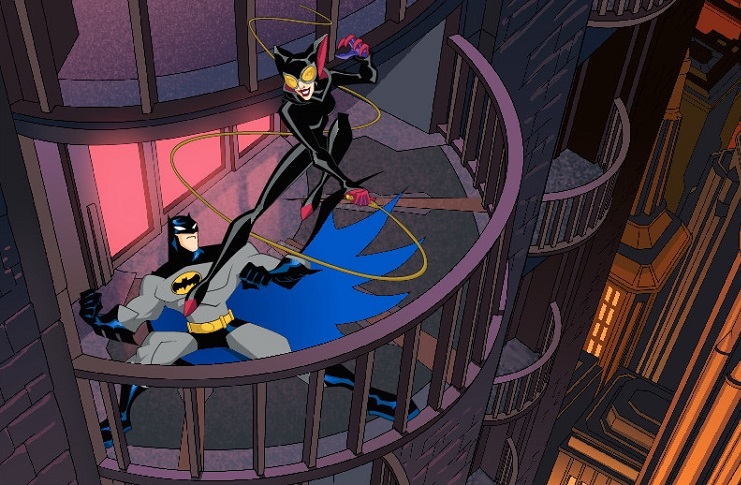
Welcome to Part 3 of my look back at the animated incarnations of Batman, in anticipation of the release of the latest live-action flick, The Batman. (If you haven’t already, check out Parts 1 and 2.) Fittingly, the series we’ll be examining today has also entitled The Batman.
Batman, The Caped Vigilante
It was a tall order to follow up the groundbreaking and Emmy Award-winning Batman: The Animated Series. The Batman was developed by Michael Goguen and Duane Capizzi who seemed to differentiate this program from B:TAS by essentially changing everything about the character’s mythos. In The Batman, the title character (voiced by Rino Romano) is not the same public hero that he had been in the past. At the beginning of the series, Gotham Chief of Police Angel Rojas (voiced by Edward James Olmos in the pilot and by Jesse Corti after that) declared that Batman was a public enemy and dispatched the police to bring him in.

The Batman debuted on Kids WB on September 11, 2004. It would go on to run for five seasons and was even given a spinoff movie, The Batman vs. Dracula. It would earn five Daytime Emmy Awards, despite not being very warmly received when it first debuted.
The depiction of Batman as an outlaw was a throwback to the hero’s earliest days in the comics. The two main cops that were featured were detectives Ethan Bennett (Steven Harris) and Ellen Yin (Ming-Na Wen), the latter of whom had recently transferred from Metropolis. However, these two sympathized with the Dark Knight and secretly aided him.
Also assisting Batman/Bruce Wayne, as he had in past adaptations, was his butler Alfred Pennyworth (Alastair Duncan). However, in the first two seasons, none of the Caped Crusader’s traditional sidekicks were included.
While the idea of making Batman a vigilante working outside of the law was a throwback, The Batman broke from the retro “Dark Deco”/film noir style of B:TAS by making this a more modern, high-tech take.
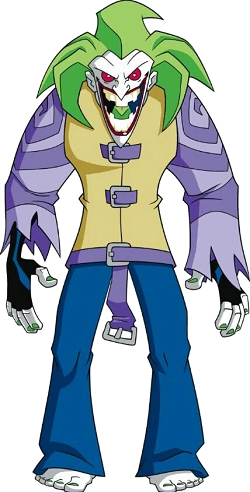
The New Old Rogues Gallery
Further changes were controversially made to the Rogues Gallery. The Joker was given long spikey hair that resembled dreadlocks. He was drawn with exposed fingers and bare feet. His original costume featured a swirly printed shirt, a straight jacket vest, and baggy jeans. He was later given an outfit that was slightly closer to the classic look, a purple jacket with an orange shirt underneath.
The Penguin was rendered relatively faithfully to the comics and past interpretations but was given sharp teeth, but that’s not that drastic a change, considering that on B:TAS the character was initially depicted as a mutant with flippers for hands, similar to Danny DeVito’s portrayal in Batman Returns.
Catwoman was not modified that much, but viewers still found fault with the large cat ears on her cowl.
Jeff Matsuda, who had previously worked on The Jackie Chan Adventures, served as the show’s art director and character designer.
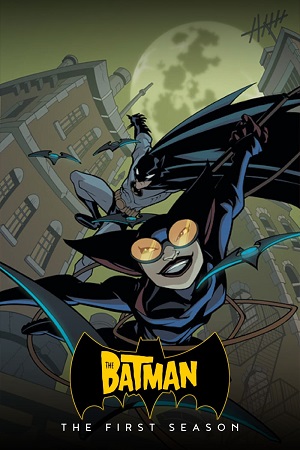
The Joker was voiced by Kevin Michael Richardson, while Tom Kenny (best known as the voice of SpongeBob Squarepants) voiced The Penguin, and Gina Gershon voiced Catwoman. Other villains included in the first season were Mr. Freeze (Clancy Brown), Firefly (Jason Marsden), the Ventriloquist and Scarface (Dan Castellaneta), Man-Bat (Peter MacNicol), Cluemaster (Glenn Shadix), and Bane (Joaquim de Almeida in his first appearance, Ron Perlman in his second, and Clancy Brown in his third).
During the first season, Batman sympathizer, Det. Bennett was captured and tortured by The Joker, and mutated into Clayface.
Another notable voice in Season 1 was Adam West, who portrayed Gotham’s mayor Marion Grange. West was of course the 1960s live-action Batman and previously voiced Batman on Filmation’s New Adventures of Batman and in the last two seasons of Hanna-Barbera’s Super Friends and the fictional hero The Gray Ghost on B:TAS.
The Batman Returns
In the second season, Batman was still wanted by the law, but his image started to change, especially after he rescued a group of policemen and Det. Yin continued working with him. But Rojas persisted in persecuting the vigilante. Things changed with the arrival of Commissioner James Gordon (Mitch Pileggi), who also supported the Dark Knight and even introduced the Bat-Signal. Rojas was written out of the show by the end of the second season. Yin was also not seen after this point, as Batman gained other support in Season 3.
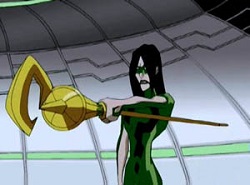
One character that was introduced in the second season was the head of Arkham Asylum, Hugo Strange, who was initially voiced by Frank Gorshin, who had played The Riddler opposite West’s Batman in the ’60s. Unfortunately, he passed away during The Batman‘s run and had to be replaced by Michael Green.
Like The Joker in Season 1, The Riddler (Robert Englund) was given a controversial makeover that didn’t go over well with a lot of purists. He was depicted with long hair and given a goth-like attitude, resembling the rock star Marilyn Manson.
It’s unclear whether the first two seasons didn’t garner high-enough ratings, or whether the creators wanted to go in a different direction, but with the third season, The Batman began drifting closer to the comic books and other past adaptations.
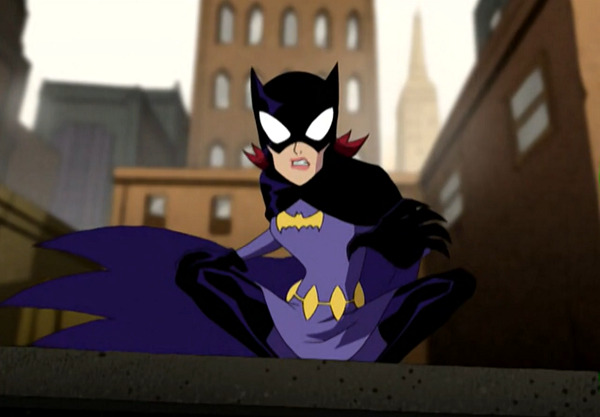
Batman Goes Boy Wonder-less
With Batman now operating under the aegis of the G.C.P.D., the show’s creators decided it was time to give him a sidekick. However, Cartoon Network’s Teen Titans was still airing at the time and Robin was the star of that series. That meant that The WB couldn’t use him on The Batman. This is a change to the way things were in 1978, when Batman and Robin were allowed to appear on two different cartoons, from two different production companies, and airing on two different networks… but their villains weren’t. In that year, The Scarecrow and Riddler appeared on ABC and Hanna-Barbera’s Challenge of the Superfriends, and the rest of the Rogues were featured on CBS and Filmations New Adventures of Batman.

It seems that in 2005, Batman’s villains and supporting characters could only appear on one cartoon at a time, so not being able to use Robin, the makers of The Batman introduced Commissioner Gordon’s daughter, Barbara (Danielle Judovits), who would become Batgirl… despite the protests of Batman. This Batgirl’s costume was a mixture of the Yvonne Craig version from the ’60s and Jun the Swan from Gatchaman/G-Force/Battle of the Planets.
In this season, Hugo Strange evolved from the corrupt head of Arkham into a full-blown villain, in an over-arcing storyline. By the end, Strange found himself locked up in the establishment that he once ran.
The existing Batmobile was destroyed and Batman introduced a new one. (Hey! More toys!) The first two seasons featured a theme song by The Edge from U2, but starting with S3, the theme was performed by Andy Sturmer from the band Jellyfish.
It was in 2005 that the direct-to-DVD movie The Batman vs. Dracula was released as a tie-in to the live-action theatrical film Batman Begins. It went on sale on October 18, just in time for Halloween and later aired on Cartoon Network.
Goodbye Batgirl, Hello Robin
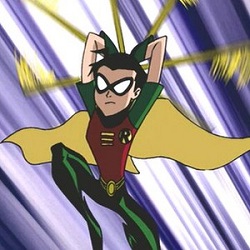
Teen Titans ended in 2006 after six seasons. This freed up Robin to be introduced on The Batman. The first episode of Season 4, introduced Dick Grayson (Evan Sabara) and depicted his origin.
This episode, “A Matter of Family” also featured the voices of Kevin Conroy as John Grayson and Mark Hamill as Boss Zucco.
In episode 2, Batgirl is officially made part of the team and each member reveals their secret identity to the others. Unfortunately, with Robin’s arrival, Batgirl was featured less and less.
One episode, “Artifacts,” borrowed heavily from Frank Miller’s The Dark Knight Returns, and was set in the year 2032. Dick Grayson had become Nightwing (Jerry O’Connell) and Barbara was wheelchair-bound and operated as Oracle (Kellie Martin).
By the end of the fourth season, Batman met the Martian Manhunter (Dorian Harewood) and was inducted into the Justice League. The members of that team featured more heavily in the show’s fifth and final season.
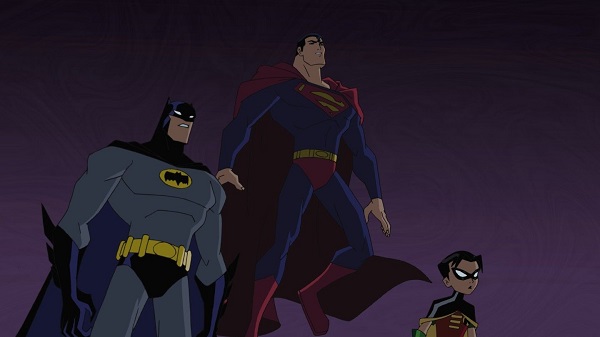
The first two episodes of Season 4 were entitled “The Batman/Superman Story” and featured the Dark Knight teamed with the Man of Steel (George Newbern, who voiced him on Justice League) against Metallo (Lex Lang), Clayface, Poison Ivy, Lex Luthor (Clancy Brown, also reprising his role from JL), Bane, Mr. Freeze, and Black Mask. In the third episode, Batman teamed up with Green Arrow (Chris Hardwick) to battle Count Vertigo (Greg Ellis).

This season also included The Flash (Charlie Schlatter, who previously voiced the character in Superman: The Animated Series), Green Lantern (Dermot Mulroney), and Hawkman (Robert Patrick). Not surprisingly, all of them were added to The Batman action figure line.
With The Flash, Batman battled Mirror Master (John Laroquette). He joined Hawkman against the Shadow Thief (Diedrich Bader, who would go on to voice Batman in the NEXT animated series), and aided Green Lantern (Hal Jordan) against Sinestro (Miguel Ferrer).
The rights issue with Wonder Woman strikes again. The character could not be used as a guest star on another show, but could only be used in an ongoing capacity, so she was absent.
Batgirl and Commissioner Gordon were mostly sidelined, with it being explained that Barbara had graduated high school and had gone off to college. She did return for the finale, the two-part “Lost Heroes.”
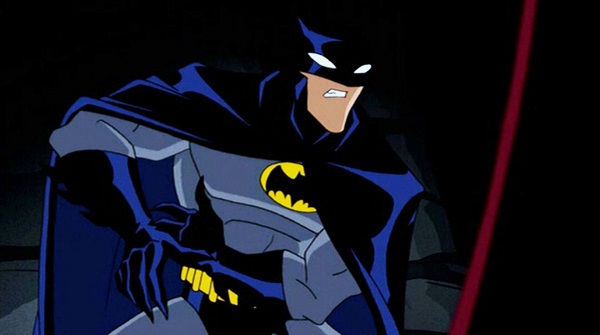
Ultimately, there were 13 episodes of each of the four seasons of The Batman for a total of 65.
Fans were taken aback by the redesigns of the villains, at first, but over its run, the show managed to win over many, particularly when other DC heroes were introduced. Four seasons is an impressive run for any animated series, so this was hardly a failure. But it’s also not very well recalled. It wasn’t as technically and thematically ambitious as Batman: The Animated Series and didn’t score with fan service aimed at older DC die-hards the way that Batman: The Brave & The Bold did.
In hindsight, The Batman is a well-made show but perhaps it deviated too much for classic fans. But it did manage to draw in its own fanbase, so ultimately, it did its job.
If you want to revisit this series or check it out for the first time, it has been released on DVD and is available to stream on HBO Max.
Did you enjoy The Batman?



